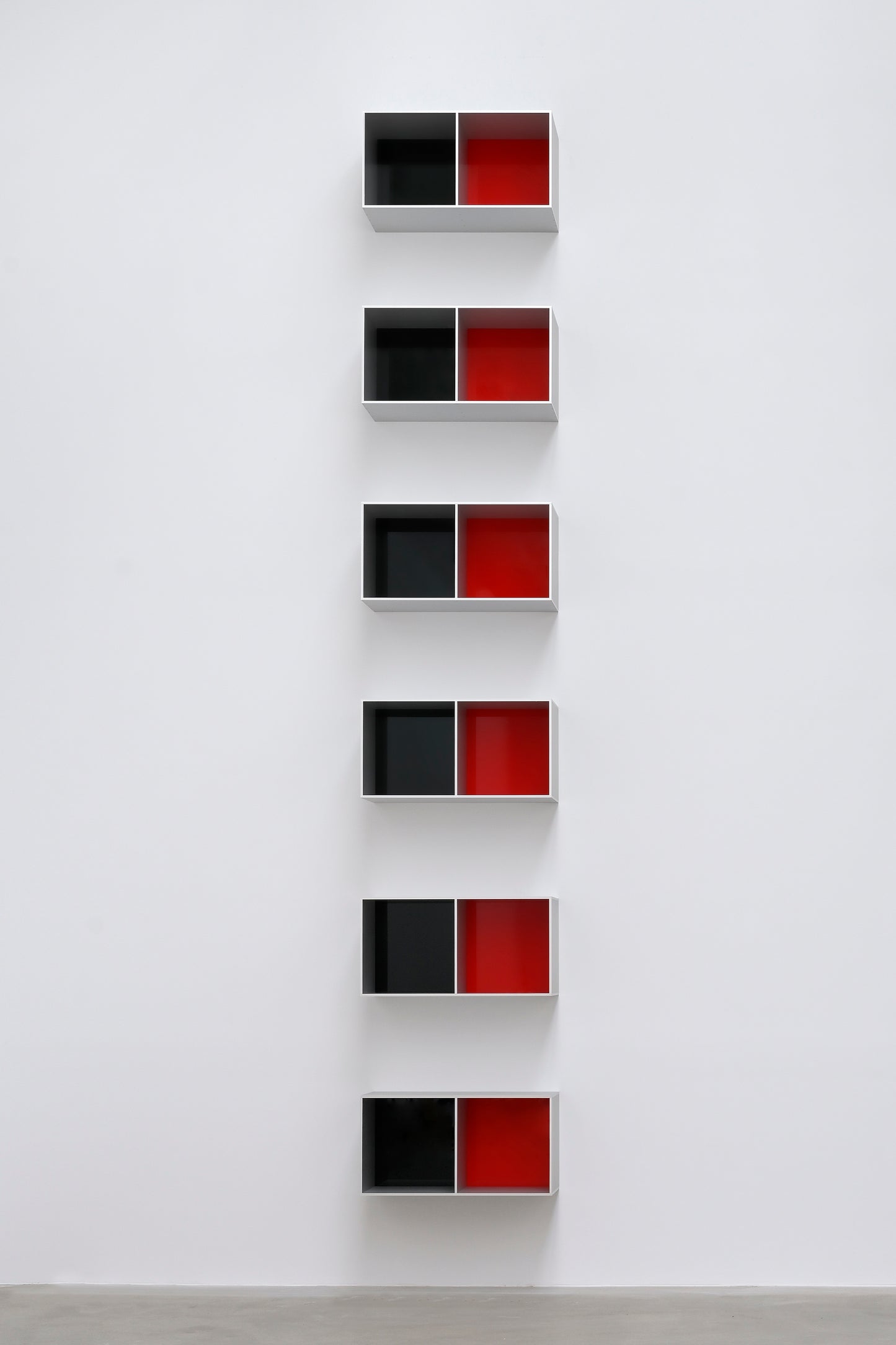Donald Judd
Untitled, 1988 (Menziken 88-16)
Untitled, 1988 (Menziken 88-16)
Donald Judd was a seminal figure in Minimalism, renowned for his architectural approach to sculpture that emphasized clean lines, repetition, industrial fabrication, and the experience of real space. Rejecting metaphor and illusion, he championed the idea of “specific objects” — autonomous forms that existed in direct relationship to their environment. In the 1970s, Judd relocated to Marfa, Texas, where he transformed decommissioned military buildings and open land into a vast permanent installation site. Through the Chinati Foundation, he realized his vision of art presented in natural light with architectural and environmental integrity. Though not overtly political, his writings and practice reflected a deep concern for land use, spatial order, and the ethics of making — aligning his aesthetic restraint with a quiet form of environmentalism.
Among his most iconic formats are the stack sculptures — modular box units mounted vertically with equal spacing to emphasize seriality and non-hierarchy. The Menziken stacks, fabricated in the late 1980s and early 1990s, represent a refined chapter in this series. Untitled (Menziken 88-16) (1988) exemplifies Judd’s late-career focus on material purity, scale, and color relationships, combining clear anodized aluminum with colored Plexiglas to create a vibrant interplay of transparency and reflection. The six modular units maintain precise geometry and engineered perfection, inviting viewers to experience space through direct physical engagement rather than pictorial representation.
The particular red-and-black palette in this work held personal and cultural resonance for Judd, recalling his childhood in Nebraska and holding significance for the Lakota people of the Great Sioux Nation. He also referenced historical and artistic precedents such as Attic vase painting, Maya codices, and the work of contemporaries like Josef Albers and Barbara Kruger. As Judd once remarked, “In a way, side-by-side, the red and the black become one color… They almost form a new unity.”
Judd’s works are held in major institutional collections worldwide, including The Museum of Modern Art (MoMA), the Whitney Museum of American Art, the Solomon R. Guggenheim Museum, and Tate Modern. His influence on contemporary sculpture, architecture, and installation art remains profound.


